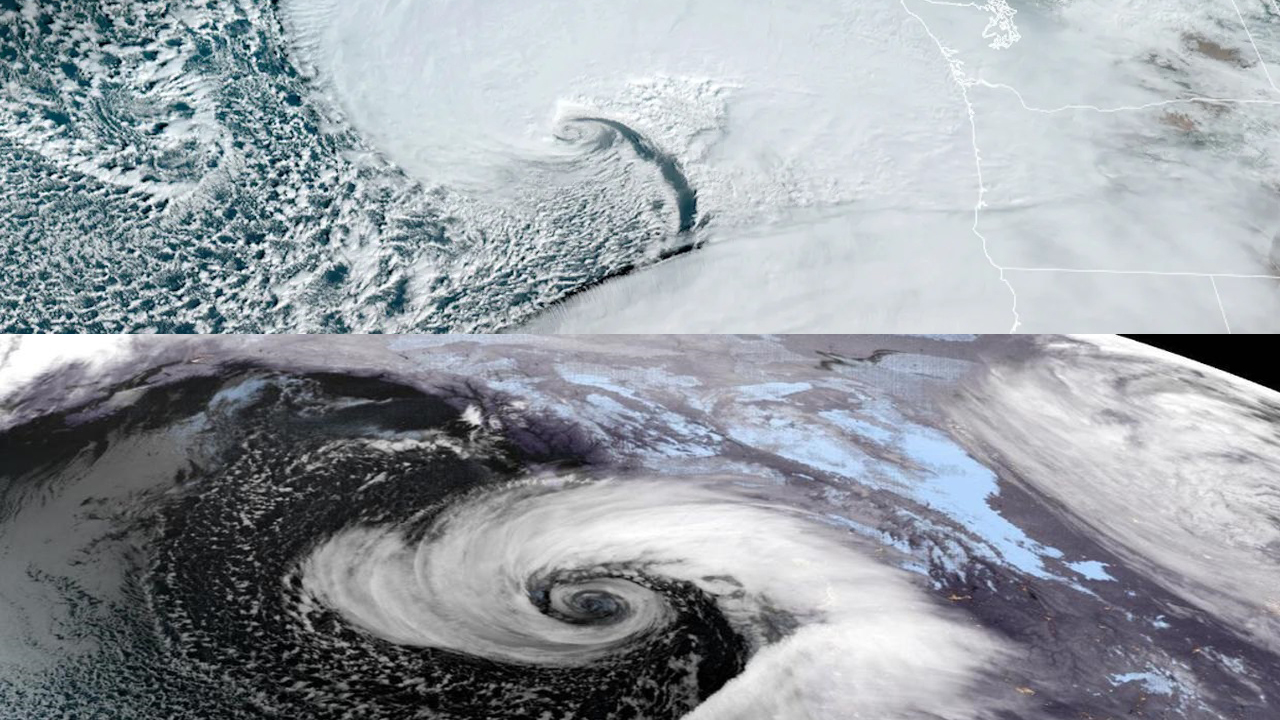West Coast Bomb Cyclone: As if the effects of a powerful bomb cyclone weren’t enough, the West Coast is bracing itself for a compounded threat as this historic storm merges with an atmospheric river, bringing life-threatening rainfall and the potential for severe flooding. This convergence of extreme weather phenomena is not just a meteorological curiosity; it poses real dangers to communities across the Pacific Northwest and British Columbia.
West Coast Bomb Cyclone
A Storm of Historic Proportions
Recently, the Pacific Northwest experienced a bomb cyclone that has been described as one of the most intense storms on record. With hurricane-force winds reaching up to 77 mph, the cyclone caused widespread devastation, resulting in at least two fatalities and leaving over 290,000 homes and businesses without power in Washington alone. British Columbia also faced significant challenges, with more than 70,000 customers affected by outages.The damage has been extensive. Trees have fallen, infrastructure has been compromised, and emergency services have been on high alert. In Maple Valley, two individuals were rescued after a tree fell on their trailer, highlighting the storm’s unpredictable and dangerous nature. As Issaquah’s mayor noted, this storm has led to significant damage and disruptions, with many traffic signals out of service.
The Emergence of the Atmospheric River | West Coast Bomb Cyclone
As the winds from the bomb cyclone begin to ease, another danger looms: an atmospheric river. This phenomenon, which transports vast amounts of moisture from the tropics, is expected to unleash torrential rain across the West Coast. Forecasters predict that this deluge could lead to life-threatening flooding that will persist throughout the week.What is an atmospheric river? Imagine a massive firehose of moisture in the sky; when it collides with a storm system like the bomb cyclone, the results can be catastrophic. Rainfall totals could exceed 10-20 inches in some areas, raising concerns about flash floods and landslides in vulnerable regions.
The Human Cost | West Coast Bomb Cyclone
The impact of these storms is not just statistical. The human toll is profound. One tragic incident occurred in King County, where a woman lost her life when a tree fell on her home while she was showering. Another woman died in Lynnwood when a tree collapsed on a homeless encampment. These incidents serve as stark reminders of the dangers posed by such extreme weather events.Additionally, transportation systems have been disrupted, exemplified by an Amtrak train that collided with a fallen tree, leaving passengers shaken but fortunately unharmed.
Preparing for What’s Next | West Coast Bomb Cyclone
As the West Coast continues to grapple with the aftermath of the bomb cyclone and prepares for the heavy rains from the atmospheric river, it’s crucial for residents to stay informed and take precautions. Here are a few tips to stay safe during these hazardous weather conditions:
- Stay Updated: Regularly check local weather reports and alerts to stay informed about any changes or warnings.
- Emergency Supplies: Ensure you have a supply kit ready, including food, water, flashlights, and batteries.
- Avoid Travel: If possible, avoid unnecessary travel during severe weather conditions to reduce the risk of accidents or being stranded.
- Report Hazards: If you notice downed power lines or trees, report them to local authorities to prevent further accidents.
The combination of a bomb cyclone and an atmospheric river is a stark reminder of the power of nature and the vulnerabilities we face as communities. While these events can bring destruction and chaos, preparedness and awareness can help mitigate their impact. As we navigate these challenges, let’s prioritize safety and support one another in the face of adversity. Stay safe, West Coast!
Disclaimer: We do not guarantee that the information of this page is 100% accurate and up to date.

